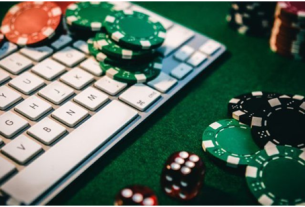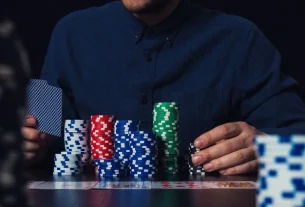It requires keeping your face blank, your gestures and expressions under control, but your body might give you away physically – you might have tells, signs that give away how good your hand is.
These subtle gestures are worth taking note of as you observe your opponent playing the game. And, as a poker player myself, I can tell you that paying attention to these tells can sharpen your sense of combinations and, by extension, your decision-making skills at the felt. Here are the three most common tells to watch for:.
Arm Position
Arm position is an essential part of your poker face. Open your hands in fourth position or fifth de l’avant (in front), in a semi-circle in front of the body, elbows bent, and the fingertips resting lightly above the head.
Knowing your opponent’s body language can improve your chances of a win at the poker table: erratic fidgeting and failure to make eye contact suggest they’re bluffing, while a still face and relaxed posture suggest that they might hold strong aces.
You develop an ability to read arm movements, leg movements and breathing for clues about their self-confidence and whatever weight of cards smugly informs those muscle movements. Poker isn’t just about the ability to hide emotion; it’s also about figuring out what emotions and expressions will fit into a strategic plan for playing the game. Your poker face, on the purely pragmatic and in-the-moment level of trying not to let your true colors show, exists because you’ve made the judgement that it is helpful for achieving a goal you have. Perhaps the inefficiency of body language would be exposed in a purist and rational simulation, such as a computer game where moves are minimal and localised. Your expectation that your seven-high will catch him bluffing might not become static and communicable facial emotion. But perhaps it would. Whatever the case, ultimately, your emotion will get shared – and its sharing will help you achieve your goals. And that’s the reason why having emotions makes you smarter.
Leg Movements
More effort is needed than just concealing emotional behaviors behind an outwardly blank mask. Poker-face skills involve a full-body awareness that includes the conscious control of facial muscles, body language and even the pace and rhythm of breathing to give the illusion of giving nothing away and tricking and tempting the poker-players sitting around the BBO table. The table image must be of one who gives away no telltales, no signs of strength or lack of strength in hand.
You might even be able to read their body language, giving you a clue as to whether they hold Do or pass; a twitchy hand or some eye-movement tells you something both about their mental state, and how hard their hand actually is.
Watch how your opponent grabs at his chips and cards, because a sudden movement can signify excitement and an easy slid command a confident demeanour and a powerful hand. ‘Pay special attention to your opponent’s leg movements,’ Navarro says, ‘they will expose a lot about his mind condition (as well as give you lots of clues to the strength of the opponent’s hand), such as if you see him cross his legs tightly, he might be nervous or uncomfortable.
Eye Movements
Being able to ununderstand and interpret nonverbal communication at the poker table is an excellent tool for gathering important intelligence on the relative strength of an opponent’s hand — as well as a means for influencing the honesty of that intelligence. Officially these would be referred to as hand gestures, as well as eye movements and type of vocal tone.
Someone might glimpse at his chips before betting to send the message that he’s feeling lucky. Then there’s the quick eye-blinking that signals nervousness, the dilation of the pupils that can mean someone is excited or trying to bluff.
And keep in mind that reading one’s adversary’s body language at the poker table is an acquired skill, as it demands the ability of being able to conceal one’s own emotions while at the same time maintaining a projected image that serves one’s strategic needs as well as detecting a broad range of facial expressions, body movements, and pitch/speed of voice in one’s fellow players.
Mouth Movements
As James Carter, president of the national non-profit organisation Centre for Nonverbal Studies, points out, 43 muscles of the face can generate 16,500 different facial expressions – of which a staggering 3,000 can express emotions. From this perspective, the best way to develop a foolproof poker face is to remain neutral when telling a lie: this makes your target unable to tell when you are telling truth or fiction. Biting or chewing your lips and tongue, on the other hand, are obvious signs of being deceitful.
Looking for tells at the BBO poker table is an essential part of the whole experience of being a poker player. While reading your opponent’s body language – your cape hubris – may lead you to take actions that increase your chances of success, keep in mind that most tells visitors make are not universal, and thus they cannot be used as definitive indicators of intention to deceive at the poker table.





